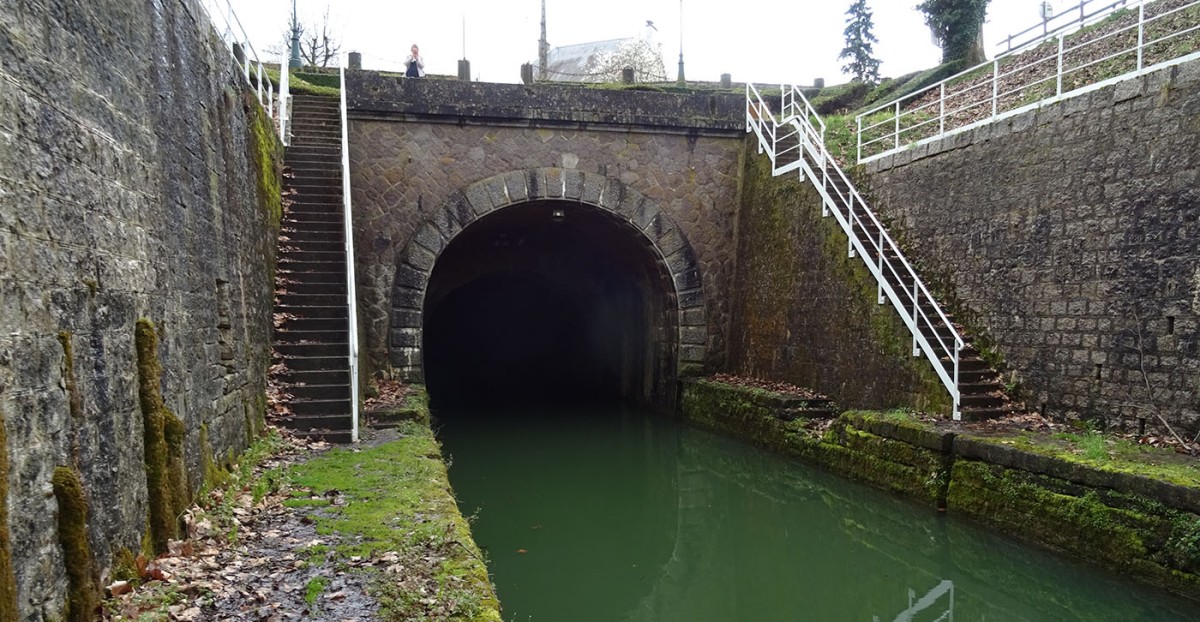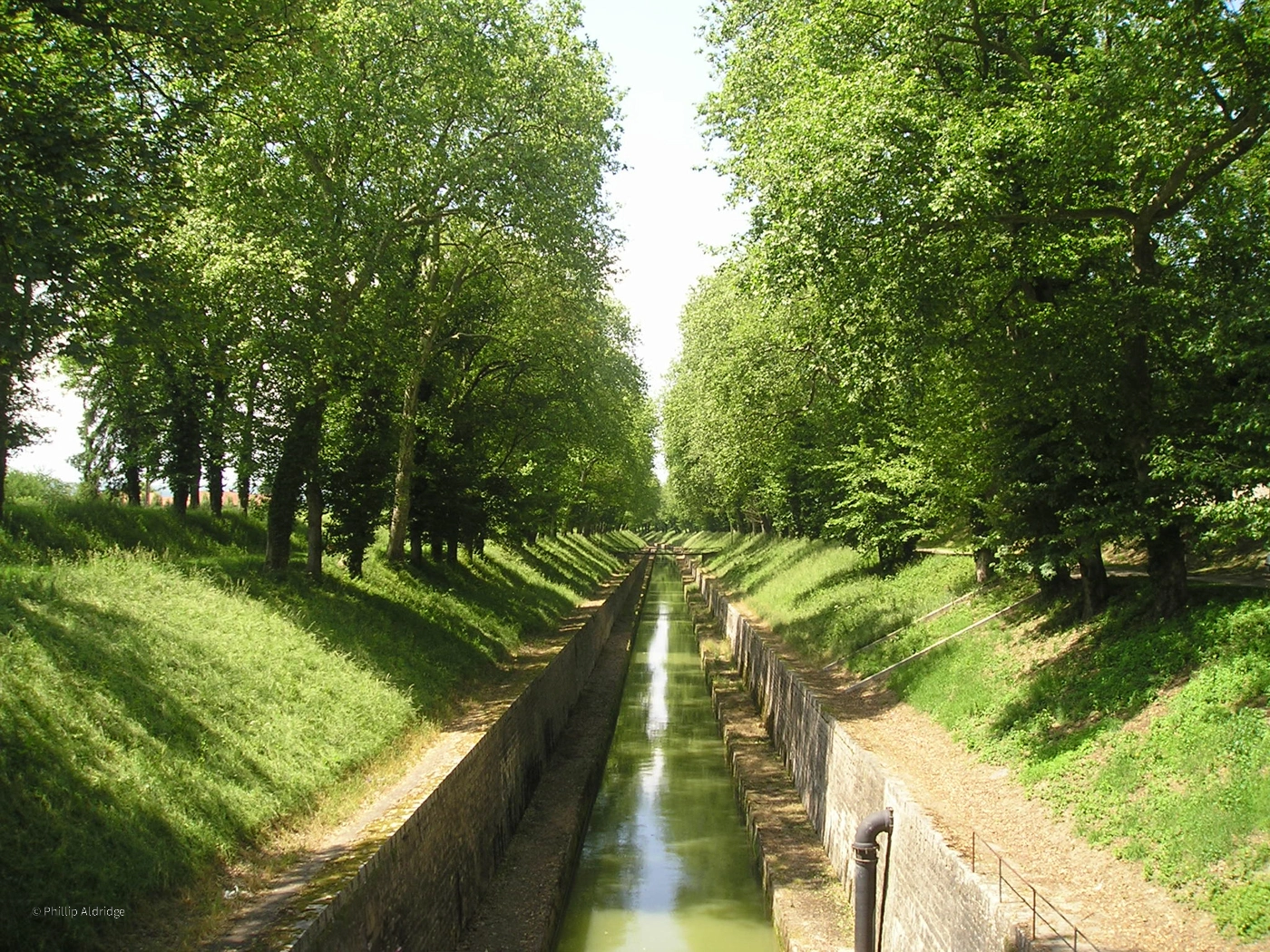
.

At the canal's summit, a 3.33-kilometre-long tunnel was built under the hills between the market town of Pouilly-en-Auxois and the tiny hamlet Escommes. The tunnel was carved in a straight line through the hills that separate the Yonne and Saone river valleys.

On either side of the tunnel is an embankment with a towpath up to the tunnel entrance.
Youtube videos
The tunnel was completed in 1832, finally allowing the passage of barges across Burgundy and the transportation of cargo from the north to the south of France.
If your cruise program takes you through the tunnel, you'll enjoy this. The bigger your barge, the longer it will take to pass the tunnel. On small hire boats, the journey should last 40 minutes to an hour. For a barge of 30 metres long, you should count 2 hours; however, for a 38-metre barge, consider 3 hours to accomplish the crossing.
Traffic is always in one direction. Traffic is regulated by the lock keepers at each end of the tunnel: recluse 1 on the Yonne northern side and recluse 1 on the Saône southern side. You must have permission from one of the lockkeepers to pass the tunnel, and your boat must be equipped with lighting and life jackets. Hence, you are not allowed through on canoes, rafts, etc.
The tunnel is now equipped with lighting and has been renovated to meet European safety standards.
This tunnel is 3.333 kilometres long in a straight line, you must remember that at these times 90% of the work was manual. At its deepest section, 48 metres of land are above the tunnel. The construction of the tunnel began in 1826 and was terminated in 1832. The work was very difficult and dangerous, and quite a few workers lost their lives during the digging. The tunnel is ventilated by 32 wells, which climb to the surface; they were also used to assist in excavating the earth during the digging. The tunnel vents were added to the construction after a few years of operation after it was realized that the pollution generated by the steal boat tug was dangerous.

.

.

.

.

.
The Burgundy Canal Tunnel is wide enough for only one barge to pass at a time, so a traffic system has always been used (managed by the lockkeepers at both ends). There was no room for a horse to tow the barge, so they crossed over the hill along the tree alley where the wells can still be seen.
Meanwhile, until a tug system was developed, the men had to pull on a special cable and use gaffs to haul the barge through the tunnel. The first tug arrived on the canal in 1867, as the steam-powered vessel continued to pull barges through until 1893, when an electrical tug was installed.
The arrival of electricity changed the canal's history and was an important step forward. The new “hydroelectric” tug could tow five loaded barges of 200 tonnes each or 15 empty barges. The electrical supply was supplied by hydro-turbines located beside the two highest locks on the canal. Here, water from the canal drove the turbines employing a sluice gate, which generated enough power to produce 600 volts on a cable that was some 6 kilometres long.
The tug drew electricity from a cable above, which powered an electrical motor. This motor then pulled on a chain that lay on the canal bottom, fixed at both extremities of the pound. The tug could then pull the barges through. It would take 1.5 to 3 hours to complete the crossing, depending on the number of boats being pulled. Although the tug is no longer used, you can still see it if you visit the Burgundy Canal, as it remains in the small town of Pouilly en Auxois.

The electric tug arrived in Pouilly en Auxois after passing through the tunnel and towing cargo barges. Dated 1921

This is a close-up of the previous photograph. You can see the chain on which the electric tug was pulled and the metal arm touching the electric cables above.

The tug leaving Pouilly en Auxois, heading towards the tunnel and Escommes, dates from 1913.

The bridge in the previous photograph is the same. The metal bridge crossing the canal is the railway. The bridge was blown up during the Second World War.

A very interesting photo taken in 1921 shows the electric tug to the right and the steam-powered version just behind, which was not kept in service for very long. The three barges that are cruising belonged to the "Company General de Navigation" from Paris; the barges are horse/mule-drawn.

Horse-drawn barges need very large rudders to maintain manoeuvrability as there is no thrust or energy from a propellor.

On this postcard, the entrance to the tunnel is dated 1903. The canal is frozen solid.
It's also interesting to notice the wooden poles that hold the electric cable which powered the tug.
Many thanks to Brigitte for the postcards.